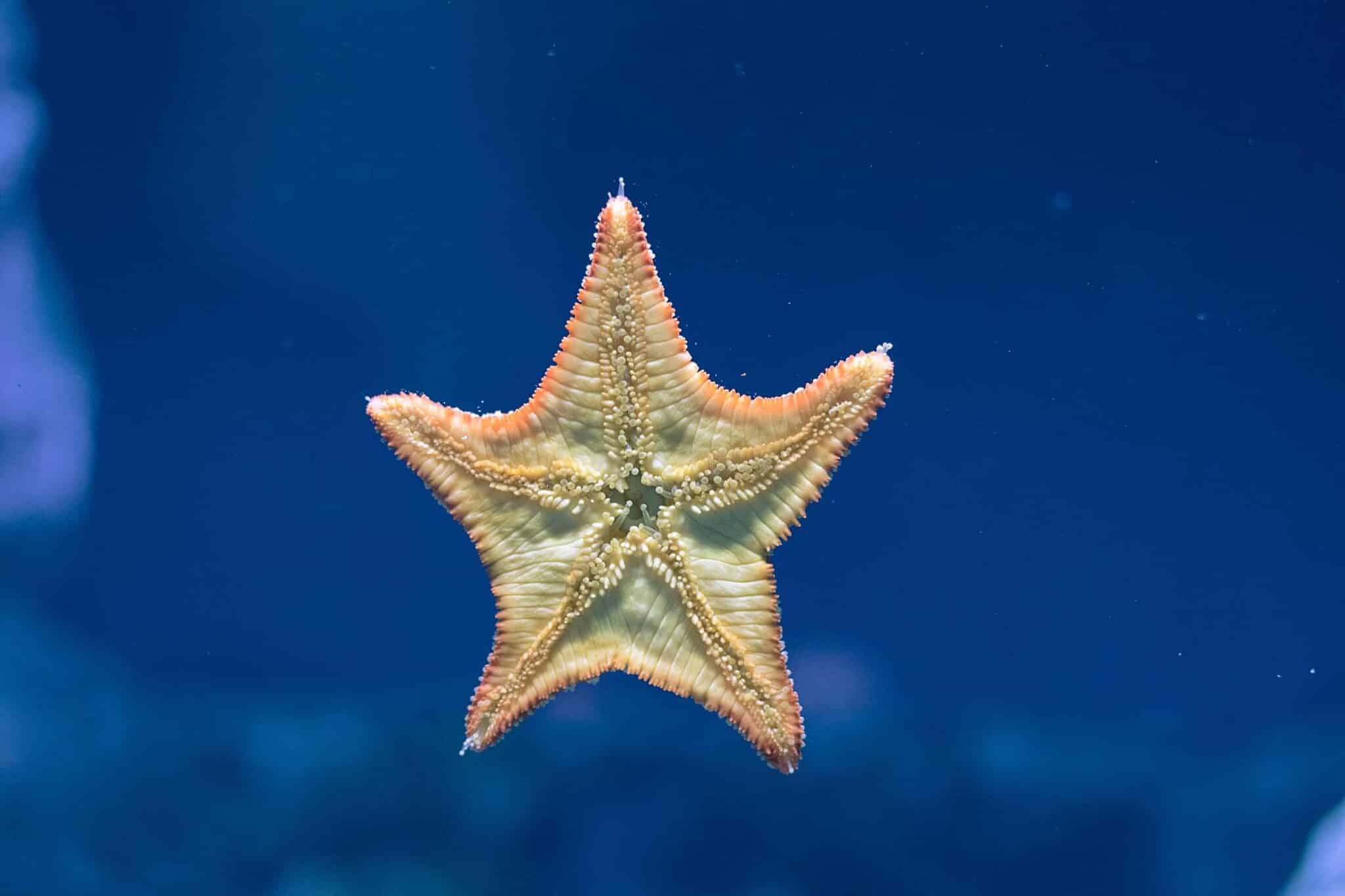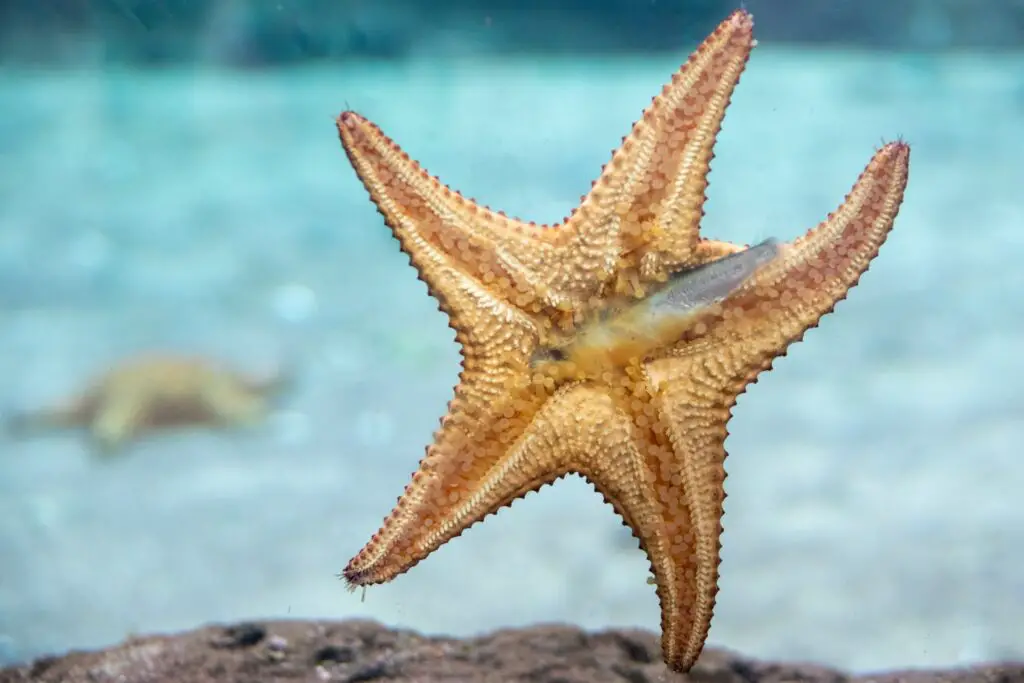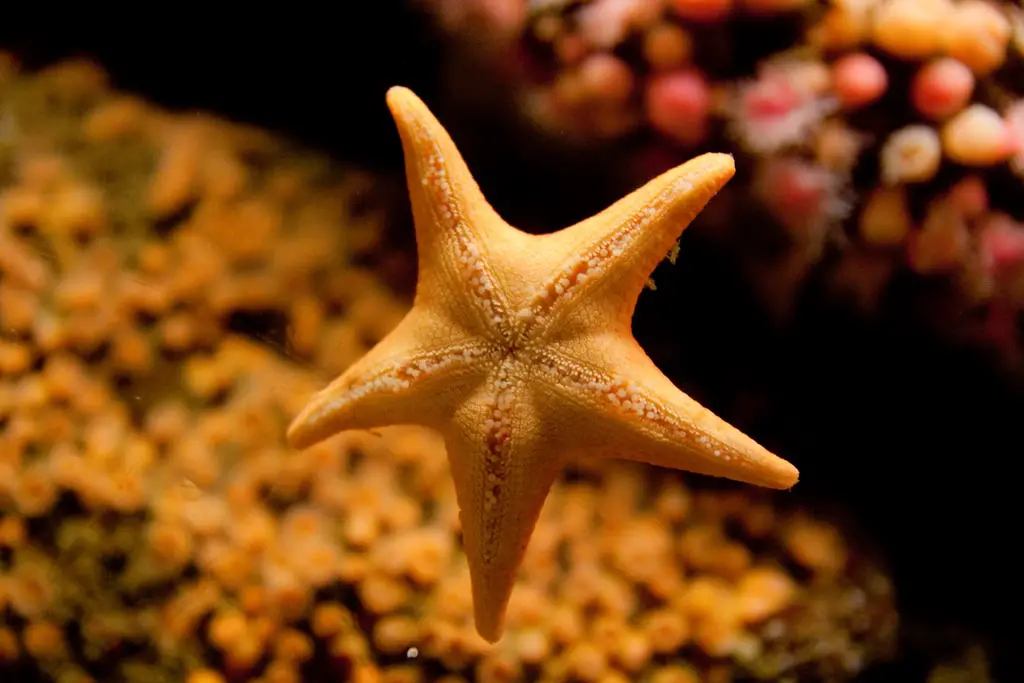Where Is The Mouth Of A Starfish

Introduction
Where Is The Mouth Of A Starfish: The world beneath the ocean’s surface is a realm of enigmatic wonders, where countless species thrive in a delicate balance of life. Among these creatures, the starfish stands out as an intriguing and often puzzling inhabitant.
Starfish, also known as sea stars, are echinoderms belonging to the class Asteroidea. They can be found in various marine ecosystems, from rocky coastlines to the abyssal depths of the ocean floor. Despite their ubiquity, the location of a starfish’s mouth is a perplexing mystery for many.
This question takes us on a fascinating journey into the world of marine biology, where scientists have grappled with the intricacies of starfish anatomy and feeding mechanisms. To unravel the secret of the starfish’s mouth, we must delve into its unique physiology, its feeding habits, and the remarkable adaptations that have allowed it to thrive in diverse aquatic environments.
We will uncover the hidden complexities of a starfish’s body, its remarkable ability to regenerate lost limbs, and the incredible diversity of species within this taxonomic class. We will also discover how the starfish’s feeding process, though seemingly simple, is a testament to the wonders of evolution.

Does starfish have mouth?
Due to their tiny mouth on the underside of their body, starfish have adapted an ingenious way of eating things larger than it can fit in their mouth. They have a stomach that can digest food outside their body, so that it can fit in their mouth. This allows the food to be further broken down inside the body.
Starfish do have a mouth, but the location of their mouth is not immediately obvious due to their unique anatomy. Starfish are marine invertebrates belonging to the class Asteroidea. They exhibit a distinctive radial symmetry, typically with five arms radiating from a central disc.
The mouth of a starfish is located on its ventral side, which is the underside of its body, in the center of the central disc. This placement is part of their remarkable adaptation to their environment. The mouth is surrounded by a series of small, movable tube feet and is usually quite small in proportion to the size of the starfish.
The tube feet serve multiple purposes, including helping the starfish capture and manipulate prey. Starfish are opportunistic feeders and primarily prey on slow-moving or sessile marine organisms, such as mollusks and small crustaceans. To consume their prey, starfish use their tube feet to grasp and hold onto the target organism.
They then evert their stomach, essentially turning their digestive system inside out, to secrete digestive enzymes onto the prey. Once the prey is partially digested externally, the liquefied tissue is absorbed through the mouth and into the starfish’s digestive system.
What side is a starfish mouth?
They use this water vascular system to propel their tube feet and to grasp onto prey such as clams and other shellfish. Feeding: Sea stars use their tube feet to handle their prey and bring it to their mouths, which are located on the oral side (or underside) of their bodies.
A starfish’s mouth is located on its ventral side, which is the underside of its body. Starfish, scientifically known as sea stars and belonging to the class Asteroidea, exhibit a unique body plan characterized by radial symmetry. They typically have five arms that radiate out from a central disc, and the mouth is positioned at the center of this disc on the ventral side.
This positioning of the mouth is a critical aspect of starfish anatomy and function. It allows the starfish to efficiently capture and feed on its prey, which primarily consists of slow-moving or sessile marine organisms like mollusks and small crustaceans. The starfish uses its tube feet, which are located on the ventral side as well, to grasp and manipulate its prey.
One of the most fascinating aspects of a starfish’s feeding process is its ability to evert its stomach. When it captures prey, the starfish can push its stomach out through its mouth and wrap it around the prey item. Digestive enzymes are then secreted onto the prey, initiating the digestion process externally. Once the prey’s tissues are partially liquified, the starfish retracts its stomach and absorbs the nutrients through its mouth.
Where is the mouth of a starfish located in relation to the stomach?
The starfish has two stomachs. The mouth is located on the dorsal side of the starfish. Looking at the starfish from the dorsal side, the mouth is on top of the stomach. The anus is located in the central disk on the dorsal side of the starfish.
This unique arrangement is closely tied to how starfish feed. When a starfish captures prey, it employs a remarkable feeding strategy. It uses its tube feet and sometimes even its spines to grasp and manipulate the prey item. Then, the starfish does something extraordinary: it everts, or turns inside out, its stomach through its mouth.
The stomach, which is located within the central disc, extends out through the mouth and envelops the prey. Digestive enzymes are secreted onto the prey’s surface, initiating the process of external digestion. This allows the starfish to begin breaking down the prey’s tissues into a liquid form.
The mouth of a starfish is located on the ventral side at the center of its body, while the stomach is positioned internally within the central disc. The ability to evert the stomach through the mouth is a remarkable adaptation that enables starfish to efficiently feed on various prey in their marine environments.
What does starfish’s mouth look like?
Starfish are flat, slow-moving animals with a central disk surrounded by five or more arms. Their mouth is typically located in the center of the disk on the bottom of the animal. It does not contain teeth. However, some species of starfish do have spines located around their mouth.
The mouth of a starfish may not be immediately recognizable due to its unique and somewhat inconspicuous appearance. Starfish, also known as sea stars, are marine invertebrates belonging to the class Asteroidea, and their mouths are adapted to their specific feeding mechanisms.
The starfish’s mouth is a small, often inconspicuous opening located on its ventral side, which is the underside of its central disc. The central disc is the part of the starfish’s body from which its arms radiate. Typically, the mouth appears as a tiny slit or opening at the center of this disc.
Surrounding the mouth, you may notice a series of small, movable structures known as tube feet. These tube feet play a crucial role in the starfish’s feeding process by helping it grasp and manipulate its prey.
While the mouth itself may not have the prominent features or characteristics commonly associated with mouths in other animals, its function is highly specialized. When the starfish captures prey, it extends its stomach through the mouth to envelop and digest the prey item externally.
Where do starfish eat from?
A starfish’s mouth is actually located on the underside of its body, more specifically in the center where its limbs all meet. From this mouth, a starfish will extend its stomach and use it to completely envelop its prey, like a clam or a sea snail.
Starfish, also known as sea stars, eat from their ventral side, specifically through their mouth, which is located on the central disc of their body. The mouth of a starfish is positioned at the center of the central disc, on the underside of the creature. This location is strategically adapted to their feeding process.
When a starfish captures prey, it typically uses its tube feet to grasp and hold onto the prey item. Once the prey is secured, the starfish does something quite remarkable: it everts its stomach. This means that it turns its stomach inside out and pushes it out through its mouth. The stomach then wraps around the prey, and digestive enzymes are secreted onto the prey’s surface.
As the prey becomes partially digested externally, the starfish retracts its stomach back through its mouth, bringing the partially liquified nutrients and prey tissues with it. The nutrients are then absorbed through the starfish’s digestive system.
Is the mouth easily visible on a starfish?
The mouth of a starfish may not always be conspicuous, as it’s on the underside and often covered by the arms and tube feet. However, you can locate it by flipping the starfish over and examining the central disk.
The mouth of a starfish is not easily visible on its external body due to its inconspicuous appearance and small size. Starfish, also known as sea stars, possess a unique body structure characterized by radial symmetry, with typically five arms radiating from a central disc. The mouth is located on the ventral side of this central disc, which is the underside of the starfish.
The mouth itself appears as a tiny slit or opening at the center of the central disc. It is not prominently featured and lacks the familiar attributes commonly associated with mouths in many other animals. Surrounding the mouth, you may observe small, movable structures known as tube feet, which play a crucial role in the starfish’s feeding process by helping it capture and manipulate prey.
The relatively inconspicuous nature of the mouth is due to the starfish’s unique feeding mechanism. When it captures prey, it extends its stomach through the mouth, enveloping and digesting the prey item externally. Therefore, the mouth serves as the entry point for the stomach when it is everted during feeding.
Can a starfish eat larger prey through its small mouth?
Starfish typically feed on prey that can fit through their mouth, which is adapted for their diet. They may use their tube feet and specialized feeding behavior to manipulate and ingest larger prey.
A starfish, with its seemingly small and inconspicuous mouth, has evolved a remarkable ability to feed on larger prey items despite its limited mouth size. The key to this capability lies in the starfish’s unique feeding mechanism and its process of external digestion.
When a starfish encounters a larger prey item, it employs its tube feet and, in some cases, its spines to capture and secure the prey. Once the prey is immobilized, the starfish begins its feeding process, which involves eversion of the stomach through its small mouth.
The starfish’s stomach is highly flexible and can expand significantly. This allows it to engulf prey items that are larger than the apparent size of its mouth. The stomach envelops the prey entirely, and digestive enzymes are secreted onto the surface of the prey. This external digestion starts breaking down the prey’s tissues into a liquid form.
As the prey becomes partially liquified, the starfish retracts its stomach, along with the digested material, back into its central disc through the same small mouth. The nutrients and partially digested prey tissues are then absorbed into the starfish’s digestive system.
So, while the starfish’s mouth may appear small, its ability to extend its stomach and perform external digestion enables it to feed on prey items that are larger than its mouth size, making it a highly effective predator in its marine ecosystem.
Do all species of starfish have their mouth in the same location?
While the general placement of the mouth on a starfish is fairly consistent among most species, there can be some variations in the exact location of the mouth depending on the specific species. In general, the mouth of a starfish is located on its ventral side, at the center of the central disc, which is the underside of its body.
However, within the diverse class Asteroidea, which includes over 1,500 species of starfish, there can be some differences in the mouth’s precise position. For example, in some species, the mouth may be slightly off-center but still on the ventral side. These variations are usually adaptations to the starfish’s specific ecological niche and feeding habits.
Despite these differences, the basic mechanism of how starfish feed remains consistent across most species. They use their tube feet and a central mouth to capture and ingest prey. They can also evert their stomach through the mouth to digest prey externally.
While there can be slight variations in the location of the mouth among different species of starfish, the majority of starfish have their mouths positioned on the ventral side at the center of the central disc. These variations are a testament to the adaptability and diversity of starfish in their various marine habitats.

Conclusion
Our journey to uncover the mystery of where the mouth of a starfish lies has taken us deep into the realms of marine biology and the wondrous world of these remarkable creatures. Throughout this exploration, we’ve not only unraveled the enigma of the starfish’s mouth but also gained a profound appreciation for the complexity of nature’s design.
The revelation that a starfish’s mouth resides on its ventral side, located at the center of its five arms, highlights the elegance of nature’s solutions to survival in the marine environment. This seemingly simple creature boasts a fascinating array of adaptations, from its tube feet and intricate water vascular system to its astonishing regenerative abilities.
Our investigation also underscored the diversity within the class Asteroidea, showcasing the incredible range of shapes, sizes, and colors that starfish can exhibit. It’s a testament to the wonders of evolution and adaptation, as starfish have adapted to various niches and ecological roles across the world’s oceans.
Moreover, understanding the feeding habits of starfish has given us insight into the delicate balance of marine ecosystems. By preying on bivalves and other slow-moving organisms, starfish play a crucial role in controlling populations and maintaining biodiversity in their habitats.



